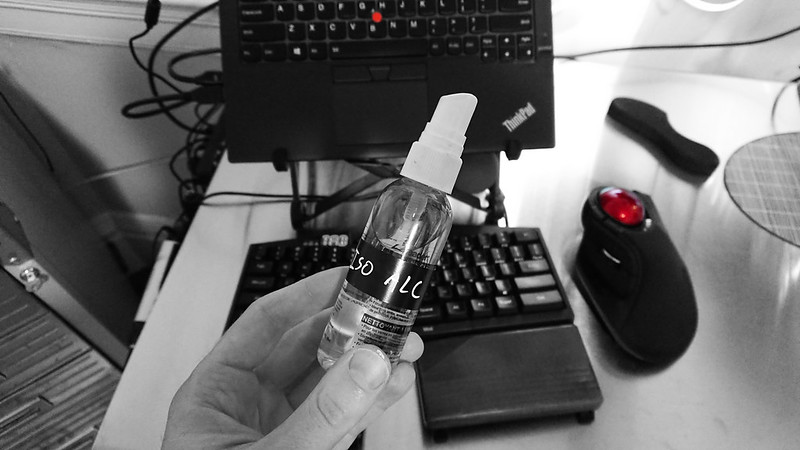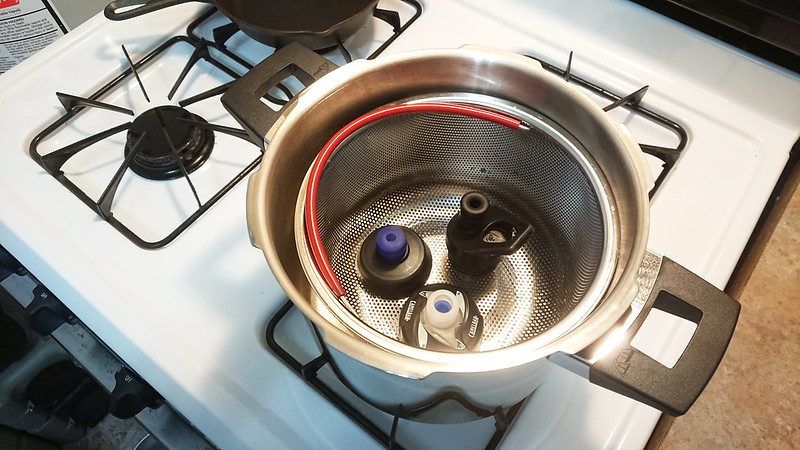Human interface devices must be cleaned frequently to prevent them from becoming petri dishes that will breed our eventual doom. I use isopropyl alcohol to clean my keyboard, pointing device, and the body of my laptop. This removes grease and oil, making the device feel clean. More importantly, it disinfects.
I keep the alcohol in a recycled 2 oz spray bottle. To clean, I spray the device directly and then wipe it off with a microfiber cloth. Spraying a cleaning solution directly onto any electronics is generally frowned upon, but I began cleaning things using this method 14 years ago and I’ve yet to experience any problems.

I buy the alcohol in 70% concentration, which is commonly available at any drugstore and apparently the best for disinfection:
The presence of water is a crucial factor in destroying or inhibiting the growth of pathogenic microorganisms with isopropyl alcohol. Water acts as a catalyst and plays a key role in denaturing the proteins of vegetative cell membranes. 70% IPA solutions penetrate the cell wall more completely which permeates the entire cell, coagulates all proteins, and therefore the microorganism dies. Extra water content slows evaporation, therefore increasing surface contact time and enhancing effectiveness. Isopropyl alcohol concentrations over 91% coagulate proteins instantly. Consequently, a protective layer is created which protects other proteins from further coagulation.
Solutions > 91% IPA may kill some bacteria, but require longer contact times for disinfection, and enable spores to lie in a dormant state without being killed. A 50% isopropyl alcohol solution kills Staphylococcus Aureus in less than 10 seconds (pg. 238), yet a 90% solution with a contact time of over two hours is ineffective.
A higher concentration is probably more appropriate if cleaning a circuit board directly, but for enclosed electronics like keyboards, trackballs, trackpads, and laptop bodies, I’ve never had the 30% water cause any problems.
I’ve tried using ROR to clean keyboards. It results in a keyboard that feels clean, but it is more expensive than isopropyl alcohol, and doesn’t disinfect. I prefer to reserve the ROR for optical surfaces.
Prior to the spray, I’ll sometimes use a micro vacuum attachment to pick up lint, crumbs, and the like. Stubborn dust sometimes require a gas duster, but I find them mostly unnecessary. (I once tried a DataVac. It wasn’t worth the cost to buy it or the space to store it.)



